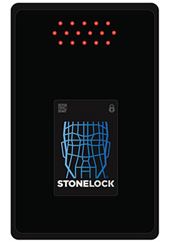The term integration is widely used within the industry to cover all manner of situations where different security devices are connected together. For example, is connecting different manufacturer's cameras to a CCTV system integration? Does an intruder alarm system that interfaces to third-party sensors constitute integration? The answer to both of these is yes, but only at the component level - not what most people would consider a true integrated solution. True integration is the ability to seamlessly interface systems from different security disciplines to create a total solution that produces greater
benefits to the end user than would be possible from the individual systems.
The flexibility and scalability of IP-networked security is well documented providing the end user with significant benefits over and above traditional wired systems. The benefits of integrating systems together over an IP network are even more significant, allowing the user to trigger operations in one system from events generated in another. To successfully implement this level of integration requires all systems concerned to be designed with integration in mind.
Ideally manufacturers would supply a single solution that provided the integration of all aspects of security - CCTV, access control, intruder and perimeter protection, automatic number plate recognition, etc. The reality is that such systems don't exist. Even if they did it would be difficult for the system to have the same features and capabilities of individual systems which are developed by companies who specialise in one particular area.
End users don't mind that their integrated solution is provided by different suppliers as long as they can
sit at one PC and control the whole system. This means vendors have to supply software that can run alongside other software. Software for each security sub-system, CCTV, access control etc, should allow the end user to choose which modules are relevant for their application and for these to operate and co-exist alongside software modules from the other systems.
Typically alarms come from three main sources, CCTV
systems, intruder alarm systems and access control
systems. Even though these three applications might be
running on the same PC, the end user doesn't want to
manage alarms in three different places. They want one
application to display and acknowledge the alarms and
maybe an interactive site map with alarms annotated from
all three sources.
Each application will have its own alarm management
software and using the IP interface, alarm information can be easily passed between these programs. However, in many situations the one application that is used the most by security operators is the CCTV system. It is therefore logical for the IP Video system to be the master alarm management application. Leading suppliers of IP video systems provide advanced alarm management features within their software suites that can not only provide the display and acknowledgment facilities but provide sophisticated cause and effect operations.
As alarms and events are centralised in one place - often the IP Video CCTV system - they can trigger actions in a process known as 'cause and effect.' This becomes the real power in an integrated system and can provide the end user with advanced features that cannot easily be achieved in wired standalone systems. Alarms and events from non-security systems can also be integrated into the solution such as from fire systems and building management. Here are some examples of how automatic cause and effect can work in an integrated system:
Police station: Cause - Smoke detector triggers a fire alarm in a specific holding cell. Effect - The CCTV camera for that cell is automatically displayed on the desk Sergeant's monitor, lights are switched on in the cell and the cell door lock is released.
Card operated turnstile: Cause - Attempted entry with incorrect smartcard. Effect - The nearest PTZ dome camera is panned to the turnstile, the video is displayed in the control room and video recording from that camera is initiated.
Secure warehouse: Cause - PIR movement detector triggers alarm. Effect - Lights in that area are switched on, operator's monitor displays video from the nearest
camera and an e-mail notification is sent to the remote supervisor.
Key code access door: Cause - illegal entry attempt with incorrect code. Effect - fixed CCTV camera by the door is displayed on the operator's monitor, two-way audio channel is opened between the operator and user and a site map of the area is displayed in the control room with location of the alarm indicated.
Industrial clean room: Cause - process alarm activates.
Effect - Will automatically display video from the affected part of the plant. User can provide visual verification of the problem before someone enters the sensitive area.
IP Video systems replace the traditional video switching hardware matrix with a so called 'virtual matrix', which is effectively the network. This allows any device (camera, monitor, etc) to be connected together under the control of the video and alarm management software, either manually by the operator or via alarm/event triggers. The flexibility of the virtual matrix is one of the reasons 'cause and effect' is such a powerful feature for integrated systems.
Even though IP-CCTV is a logical place to consolidate alarms, it must also be able to act as a slave alarm system and allow external systems to directly drive actions, such as camera pan, start recording, display a camera salvo, etc.
IP-based security systems use a standard network interface, however, the protocols they use to pass messages to devices within their own systems are different. The messages from different systems can co-exist quite happily on the network - they just can't understand each other. So for a particular IP Video system to communicate with a particular networked
access control system an interface has to be specifically
developed. This can be either in the access control system or in the IP Video system and as the IP Video system tends to be the alarm master they are usually developed here. IP Video manufacturers have thus created a suite of interfaces that allow a wide range of different access control systems to integrate together.
This approach is fine as long as the system is IP-network based. However, many systems are not, so in these scenarios, the only practical way to bring external alarms into the system is via a digital input/output interface. This is typically a unit that has a network connection on one side and a series of inputs and outputs on the other. The unit can interface to contact closures and can for example operate outputs to switch plant or close a door.
Security systems create Audit trails, where every user activity on the system is logged in detail to a database. The end user will need to create reports of this activity but doesn't want to have to produce separate reports from each system in the integrated solution. Many systems have their own built-in report generators that cannot easily be integrated with each other. The way around this is to use a common database interface such as ODBC and publish the database structure. This way the end user can write unified reports using specialised report writing software that can interrogate multiple
databases.
System network management will inevitably be more complex for IT managers when many devices from
different manufacturers are located on the same network - even more so if the network is used as a corporate LAN as well. However, most leading IP-based security systems support SNMP, the industry standard for network equipment management. The Simple Network Management Protocol (SNMP) is used by network management systems to monitor network-attached devices for conditions that warrant administrative attention or maintainance, providing IT managers with one single tool for managing all devices on the network.
Authentication is another problem when integrating systems from different suppliers. Again the end user
doesn't want to login with different usernames and passwords to several different manufacturers' software. One solution, which has been adopted by many of the leading solutions, is to use Windows accounts in Active Directory. As long as all the software in the system uses the same mechanism, the end-user can gain access to all the systems with one login.
The benefits of integrating security systems on IP-networks are clear to see. It offers end users powerful
features not available from stand-alone or wired systems. Even though the systems are from different suppliers it's important that the end user sees a unified interface otherwise many of the benefits would be negated. This is why it is important that alarms are consolidated in one place, often the IP Video system, and that this system provides advanced alarm management facilities in addition to powerful video capabilities.
07/09/2007















